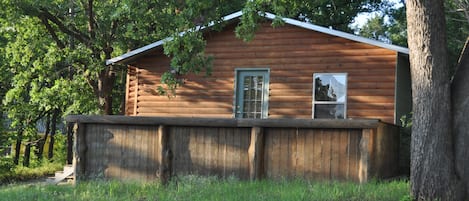Vintage Trailer Addiction (VTA) is a serious illness. It is particularly dangerous because the early symptoms are not readily detectable until the disease has progressed and taken hold of the patient’s vital resources (e.g., thought processes, time, energy, finances). I know. My name's Steve, and I'm a Vintage Trailer Addict.
Like so many others, I slowly and unwittingly walked down this addictive path. My gateway to addiction began when Carrie and I restored a beautiful home in the historic district of Flemington, New Jersey back in the 1980s. It was a great experience, except that the house had no wheels so we couldn't take it with us.
When we moved to Sherman, Texas in 1990 in order for me to teach Christian Theology at Austin College, we immersed ourselves in raising and homeschooling our three children and pursuing my calling to teach. Though my fledgling trailer addiction was not causing problems, I realize in retrospect that I was simply holding it at bay by the frantic pace of our existence. (This is sometimes referred to as “white-knuckling it” in VTA recovery circles.) When our antique-filled home burned to the ground in 1995, we focused on the design and re-building process, further forestalling the full-blown emergence of my disease.
The first recognizable symptoms of VTA appeared when my brother was searching for a way to live on some land down in Terlingua, Texas. In that process we stumbled upon a couple of vintage trailer sites and the book Silver Palaces by Douglas Keister. Immediately, I was awe-struck –- the captivating curves, the sensual pleasure of wood grains and polished metals, the quality craftsmanship, the form-follows-function embodiment of natural beauty. Though I told myself I was just helping my brother, there were deeper longings being cultivated and expressed. Now, eight trailers later (four 1950s Spartans, a 1960 and a 1969 Airstream, a 1965 Streamline, and a 1963 Avion), I still regularly attend my VTA recovery meetings!







